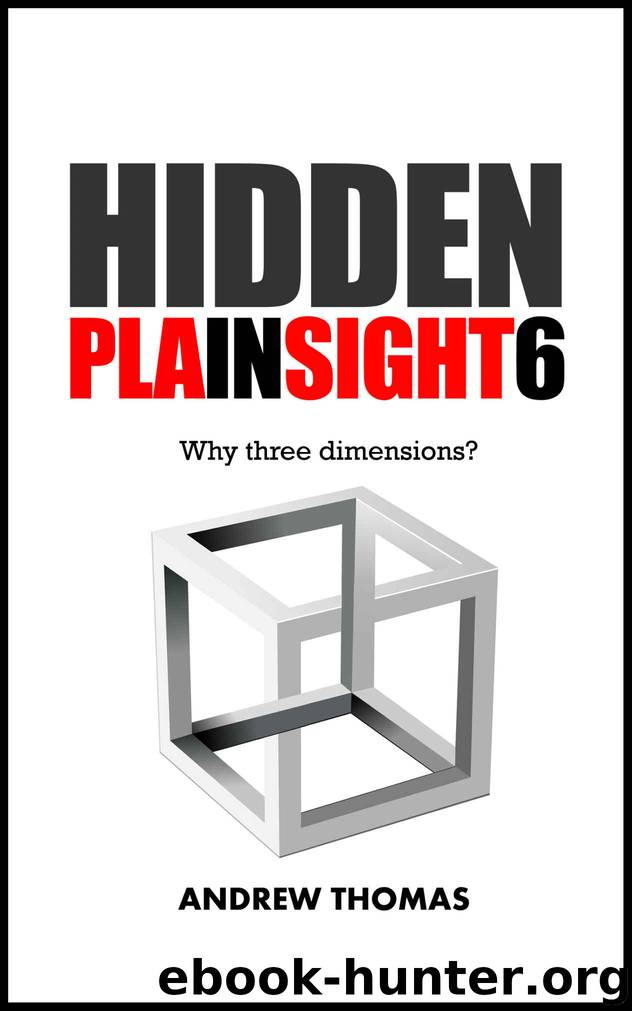Hidden In Plain Sight 6: Why Three Dimensions? by Andrew Thomas

Author:Andrew Thomas [Thomas, Andrew]
Language: eng
Format: epub
Published: 2016-07-09T21:00:00+00:00
5
INTO THE FIFTH DIMENSION
When you have made the greatest scientific discovery of all time, the question then becomes: "How do I follow that?" That was surely the challenge facing Einstein after he discovered general relativity in 1915. However, his course of action probably appeared quite clear. Just as is the case today, there were a few fairly clear problems in fundamental physics which cried out for solutions. And, just as is the case today, these questions tended to revolve around the problem of unification.
As described in my first book, if we find we have two theories which explain two apparently different behaviours of Nature, we might find it possible to replace both those theories with a single theory which still manages to explain both of those behaviours. When this happens, the process is called unification. The resultant unified theory will be simpler than either of the two previous theories.
As was described in Chapter Two of this book, one way of combining two apparently different behaviours is to introduce extra dimensions (remember the "flying octopus"?). In this chapter we will be examining the first attempt at unification using extra dimensions.
Today, one of the greatest quests in physics is to find a unification between general relativity and quantum mechanics. These are the two dominant theories of the physical world, and the unification of these theories stands out quite clearly as a problem in urgent need of a solution.
In Einstein's time, there was also a very clear need for a unification, a unification between the theory of electromagnetism and Einstein's own theory of general relativity. In order to understand why this was such an important quest, we need to imagine travelling back in time to the early decades of the 20th century, and putting ourselves into the mindset of the physicists of that period.
In the 19th century, the greatest advance in physics since the time of Newton was achieved. This was the development of the theory of classical (i.e., non-quantum) electromagnetism. In 1820, French physicist Andre-Marie Ampère had shown that wires carrying electric current generated a magnetic field, and those wires were either attracted or repelled by the magnetic force between them, depending on the direction of the electric current. In 1831, Michael Faraday discovered the inverse of this result by demonstrating that a magnet moving through a coil of wire produces an electric current in that wire. So there was clearly a symmetry between electricity and magnetism. It was then left to the great Scottish physicist James Clerk Maxwell who, in 1862, formalised this unification between electricity and magnetism in mathematical form. Maxwell published four equations, now simply known as Maxwell's equations.
Of particular interest to Einstein had been the form of Maxwell's equations in a vacuum (empty space containing no electric charges or current). Maxwell had shown that his equations made the symmetry between electricity and magnetism clear:
A changing magnetic field creates an electric field.
A changing electric field creates a magnetic field.
Download
This site does not store any files on its server. We only index and link to content provided by other sites. Please contact the content providers to delete copyright contents if any and email us, we'll remove relevant links or contents immediately.
The Complete Stick Figure Physics Tutorials by Allen Sarah(7135)
Secrets of Antigravity Propulsion: Tesla, UFOs, and Classified Aerospace Technology by Ph.D. Paul A. Laviolette(4982)
Thing Explainer by Randall Munroe(3782)
The River of Consciousness by Oliver Sacks(3414)
The Order of Time by Carlo Rovelli(3073)
How To by Randall Munroe(2912)
I Live in the Future & Here's How It Works by Nick Bilton(2842)
A Brief History of Time by Stephen Hawking(2819)
What If?: Serious Scientific Answers to Absurd Hypothetical Questions by Randall Munroe(2542)
The Great Unknown by Marcus du Sautoy(2535)
Midnight in Chernobyl by Adam Higginbotham(2388)
Blockchain: Ultimate Step By Step Guide To Understanding Blockchain Technology, Bitcoin Creation, and the future of Money (Novice to Expert) by Keizer Söze(2379)
Networks: An Introduction by Newman Mark(2264)
The Meaning of it All by Richard Feynman(2213)
Easy Electronics by Charles Platt(2207)
The Tao of Physics by Fritjof Capra(2164)
Midnight in Chernobyl: The Untold Story of the World's Greatest Nuclear Disaster by Adam Higginbotham(2077)
When by Daniel H Pink(2021)
Introducing Relativity by Bruce Bassett(2018)
